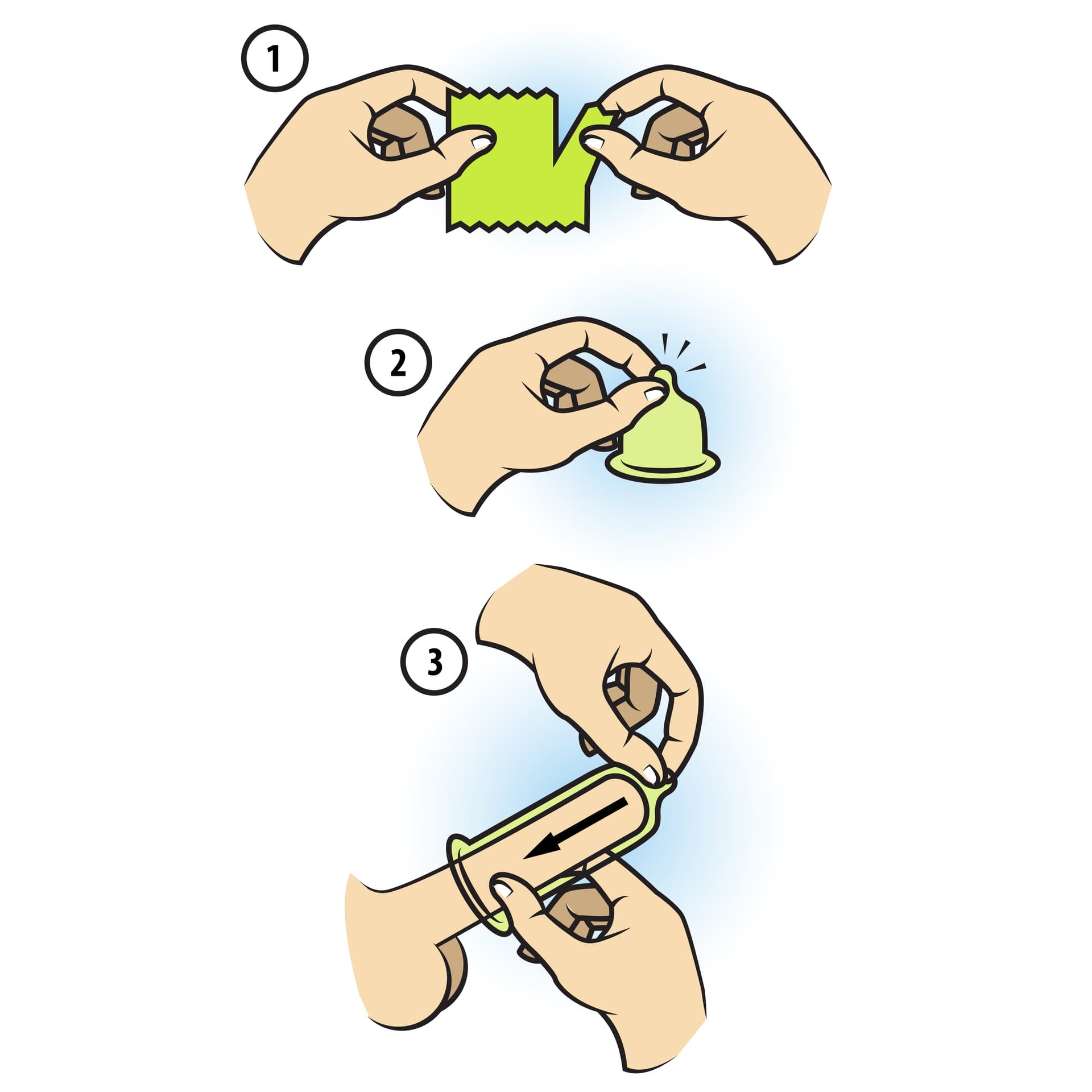There is no surefire way to prevent sexually transmitted infections or diseases (STIs or STDs) or unwanted pregnancies other than not having sex. Condoms have traditionally been—and remain—an effective and reliable tool, but only if you use them properly.
Used correctly, condoms can be up to 98 percent effective in preventing STIs and pregnancy. Used incorrectly, they’re, well…less so. That’s why it is important to know how to properly put on and use a condom, before you’re in the moment.
How to Put on a Condom: Step by Step

- Step 1: Open the package, being careful not to tear the condom.
- Step 2: Take note of the condom’s position before it is unrolled. The rim should be on the outside.
- Step 3: Place the condom on the end of the erect penis. If uncircumcised, pull the foreskin back. Pinch the reservoir tip to expel air.
- Step 4: Carefully roll the condom down the base of the penis.
Taking Off a Condom
Taking off a condom correctly is just as important as putting one on correctly. If you break the condom at this stage or spill semen from it, you could potentially expose yourself or your partner to STIs or pregnancy.
- Step 1: Hold the condom at the base before withdrawing the penis.
- Step 2: Angle the penis down and away from the partner.
- Step 3: Carefully remove the condom and dispose it in a trash can.
Tips for Proper Condom Use
These tips will help you preserve your condoms before use, and use them safely and correctly, every time.
- Use a condom every time you have oral, vaginal or anal sex.
- Slow down! User error is the number one reason condoms fail. Take it slow when removing the condom from its packaging, putting it on and taking it off. Make sure it doesn’t rip.
- Choose the right size. A condom that is too small will be uncomfortable, whereas one that’s too big will not provide the necessary protection.
- Store condoms in a cool, dry place. Keeping condoms in a wallet can result in the device breaking.
- Combine condoms with other birth control methods, such as IUDs or the Pill.
- Emergency contraception, also known as Plan B or the morning-after pill, does not protect against STIs and is not a substitute for condom use.
- Do not use oil-based lubricants such as petroleum jelly with latex condoms, as they can degrade the latex’s effectiveness.
- Use one condom per sex act.
- Never wear more than one condom at a time. Wearing two or more can cause them to rip due to friction.
Get More Safe Sex Education
Sex education is the responsibility of everyone who is sexually active. New Jersey Family Planning League is dedicated to providing sex education and sexual health services for all who need them. If you have questions about safe sex or sexual health, contact your nearest NJFPL-supported health center.
